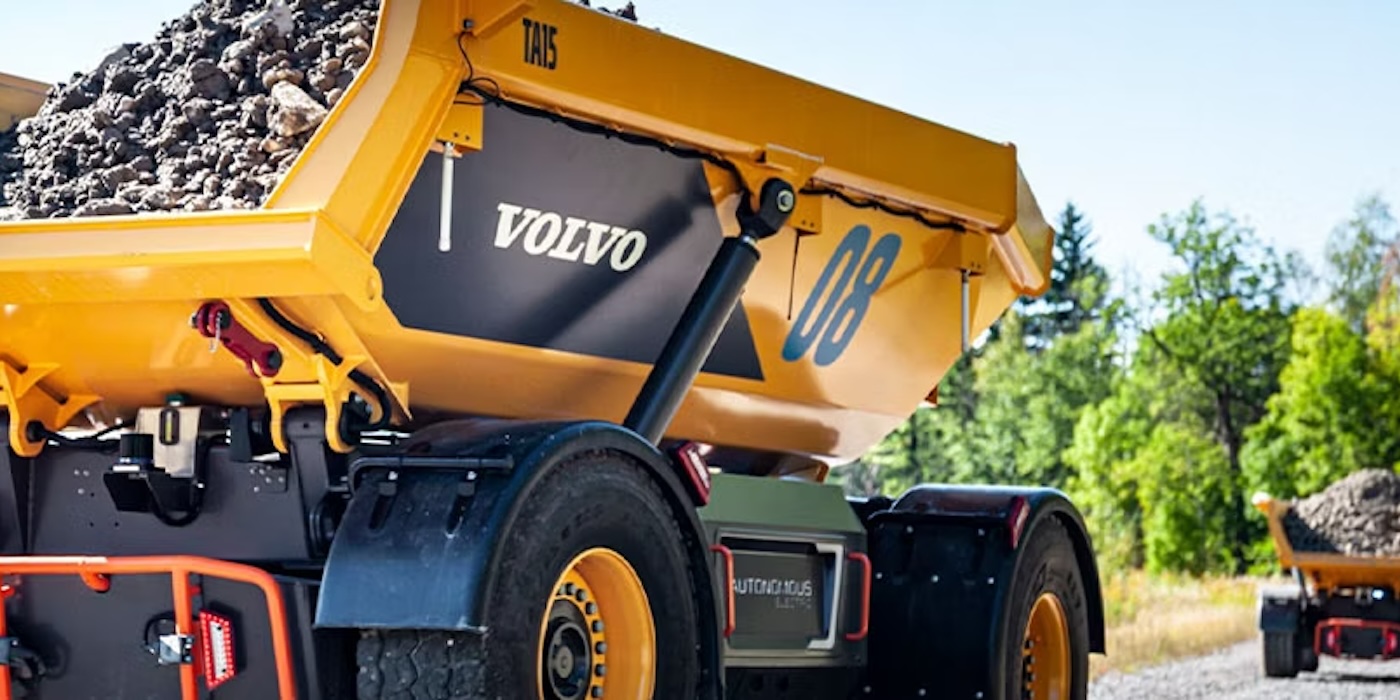
Volvo Days 2024 packed a lot of innovative new products into a few short days, but the company’s autonomous construction robots still managed to stand out.
A global shortage of qualified operators is impacting job sites everywhere, precisely at a time when demand for housing, mineral mining, and renewable energy construction is going from peak to peak. That’s why companies from Caterpillar to Tesla to Einride are pushing to advance autonomy the way they are.
And, like they’ve done with semi truck electrification, Volvo Group’s vision for the future has them firmly in a leadership role as the construction industry automates.
CX01 autonomous hybrid compactor
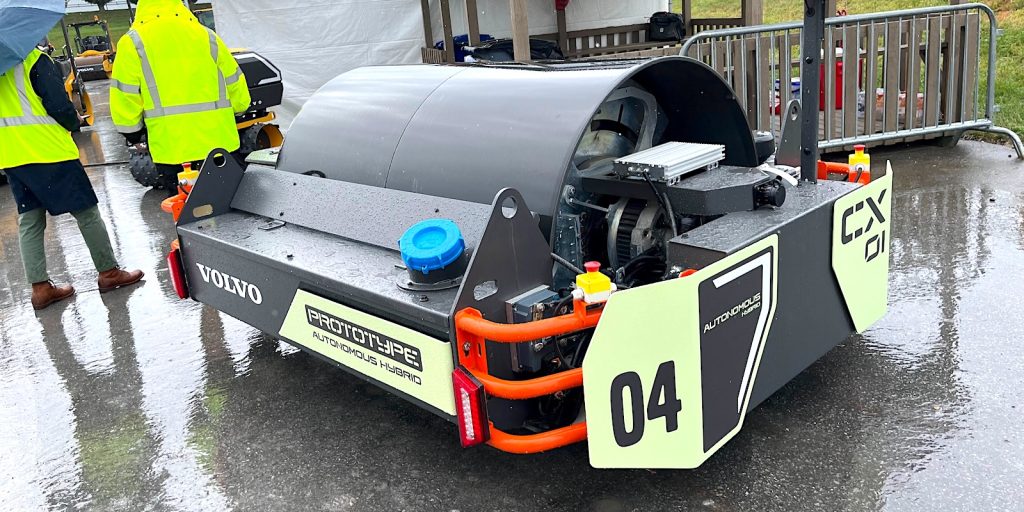
First revealed as a concept in 2021, Volvo CE’s CX01 autonomous “single drum” asphalt roller concept has seen continuous development in the years since. Making its Volvo Days debut, the CX01 has shed the original single drum design for a “split drum,” with each half being controlled by an internalized, independent electric motor.
The CX01’s electric motors not only help to propel and steer the roller, they also vibrate the drums individually, using some trick software calibration to effectively “cancel each other out,” delivering all the benefits of vibrating drum rollers without the noise.
It’s so smart, you guys

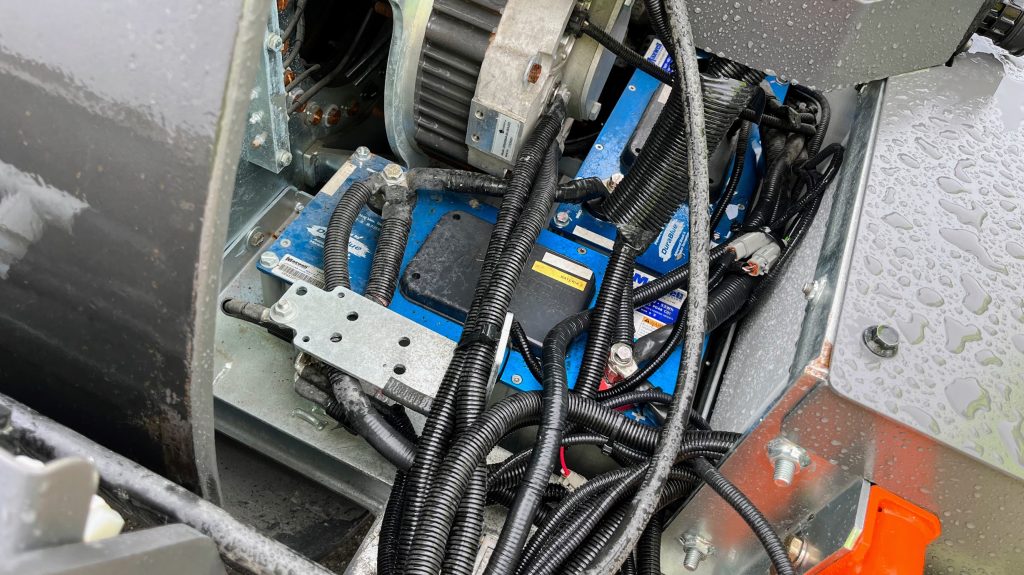
It’s also worth noting that the CX01 is something of an “extended range” EV, instead of a “pure” BEV. That’s because it uses a small, 1.4L diesel engine to spin a generator that powers not batteries, but capacitors (those blue things, above right). Those capacitors can be charged on grid power (or from an accompanying TC13 trench compactor), but they’re much better than batteries at releasing energy really quickly, enabling the diesel to operate at its maximum efficiency while maintaining extremely precise, high-torque movement from the motors.
Volvo CE engineers envision a team CX01 rollers units deployed on larger job sites that could work together and communicate with other pieces of equipment on the site. The connected equipment could help survey the job site, report on the conditions of the mat (density, temperature, and passes), and leverage AI to determine when and where to compact without the need for human operators.
All of which is great, sure – but they had me at “giant OneWheel.”
Volvo TA15 autonomous electric haul truck
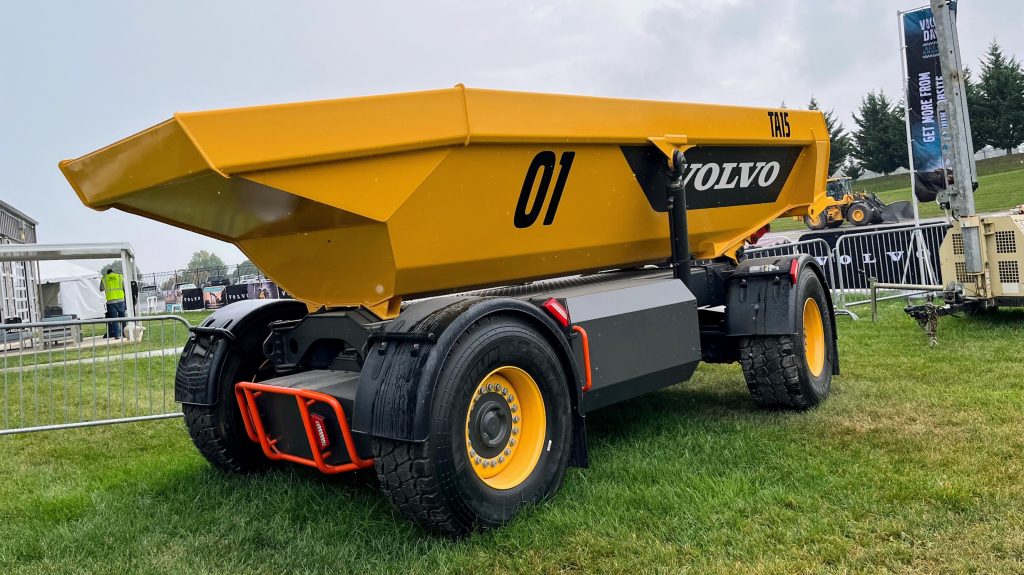
Part of Volvo CE’ “TARA” line of autonomous products, the “production ready” TA15 autonomous electric haul trucks are already part of a number of pilot programs on Volvo customer job sites. Being autonomous, they’re ideally suited to performing repetitive routes, dozens of times per day, without exposing human operators to fatigue or injury.
Big robot dumper
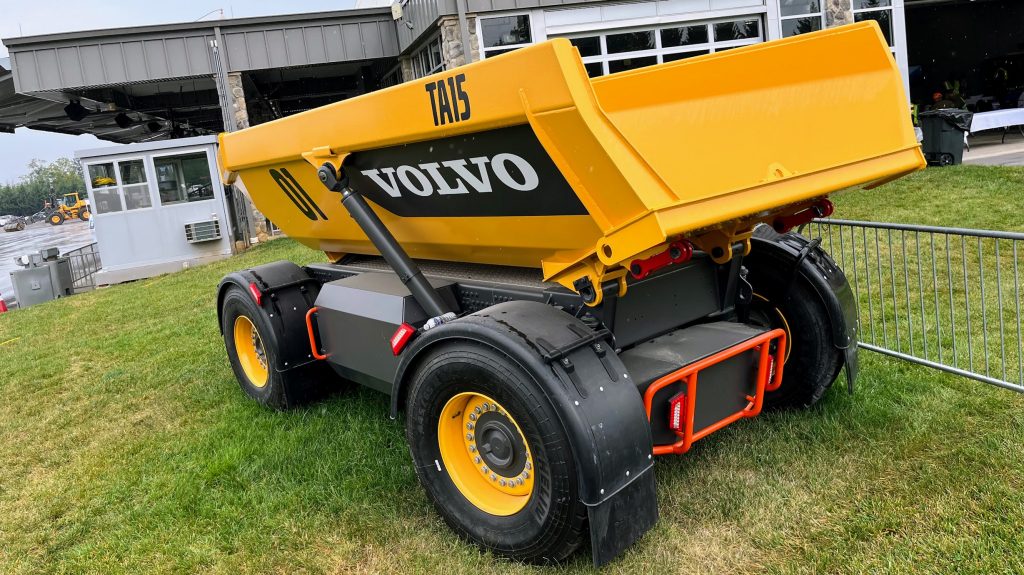
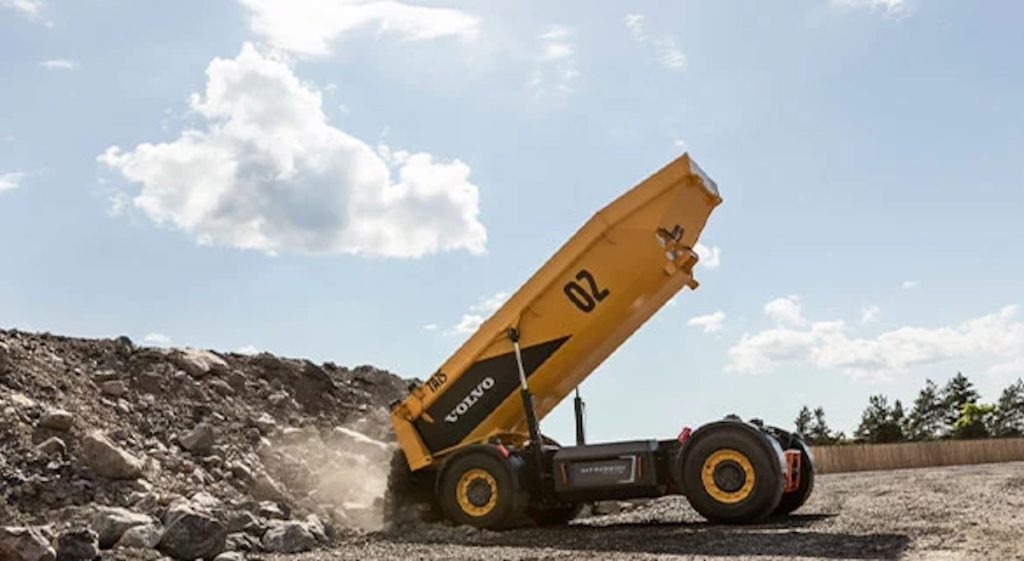
The Volvo TA15 is a fully automated electric dumper designed to operate on busy job sites with tight tolerances. With the TA15, Volvo says customers will be able to replace larger, diesel-powered vehicles with a fleet of smaller, “right sized” Volvo TA15s. The electric haul bots offer cleaner, quieter operation and increase efficiency.
“TARA enables you to downsize and replace larger diesel-powered vehicles with a fleet of autonomous electric Volvo TA15s capable of running 24/7,” reads the official TARA release. “This not only helps you cut emissions and increase productivity, it will also help you rightsize your machinery and optimize your hauling routes.”
And that brings us to the real topic at hand: sustainability.
Electrek’s Take
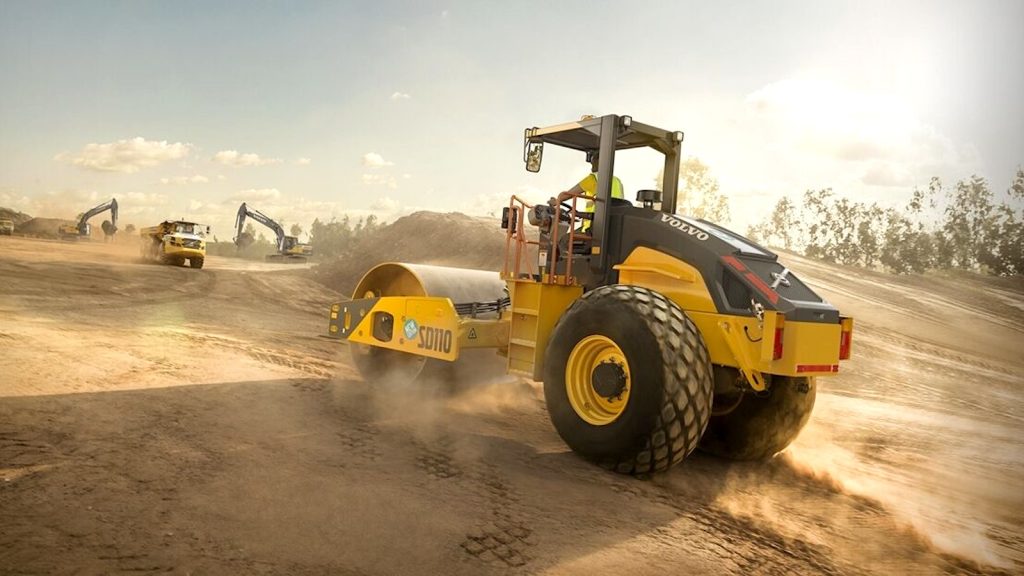
As we’ve often discussed on The Heavy Equipment Podcast, there are two types of sustainability, and both are important. The first is the “classic” version of sustainability, in that our choices need to sustain the planet and environment we live in. The second is sustainability of the business – the ability to keep doing business in a way that ensures the survival of the business, itself.
Looking at the conventional Volvo SD110 conventional roller, above, you can see the incredible amount of materials – of steel, rubber, plastic, glass, etc. – that simply isn’t needed to produce the CX01 roller we started this article with.
All that added mass has a massive hidden carbon cost. The cost of getting those materials out of the ground, the need for bigger, heavier roads to support the weight of the machine, and the bigger, burlier trucks and trailers needed to transport it. Heck, even the operator’s commute to and from the job site adds to the carbon cost of the SD110, over and above the harmful emissions from its diesel engine’s exhaust stack.
The CX01? It’s objectively more sustainable than the SD110 roller in every way, and does pretty much the same job.
The Volvo TA15, too, is lighter and more compact than a conventional rigid haul truck. That reduced mass enables job sites and mining operations to maintain narrower haul routs that are less expensive to build and easier/cheaper to maintain, all while contributing to carbon reductions all across even the broadest scope of job site operations.
That’s both sustainable, and sustainable – and just another reason why forward-thinking fleet buyers will be watching this space closely.
ORIGINAL CONTENT FROM ELECTREK.
